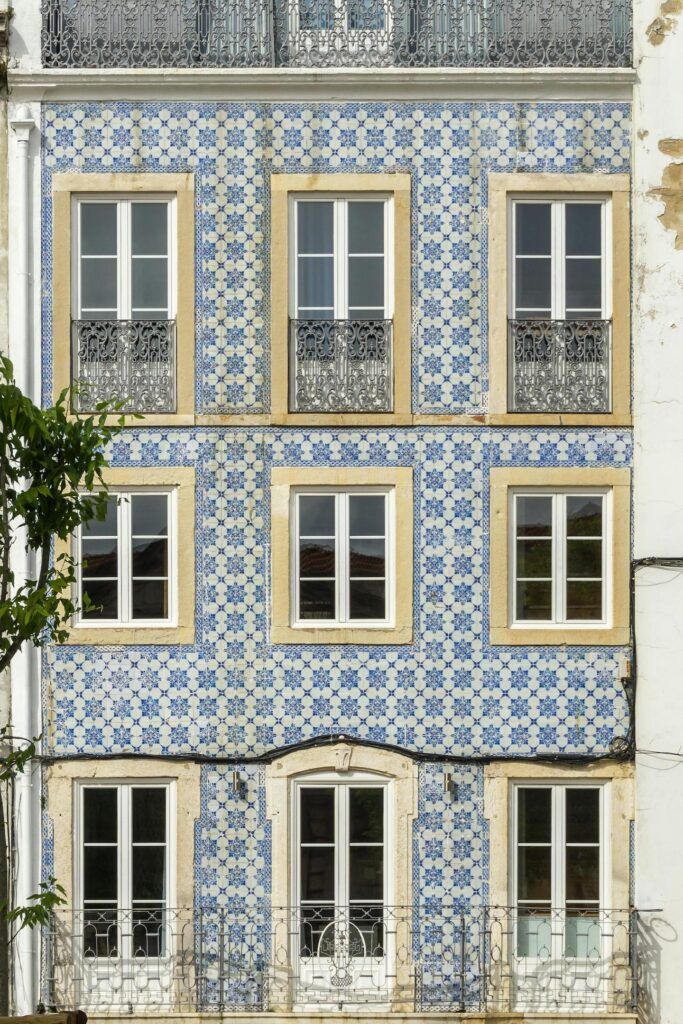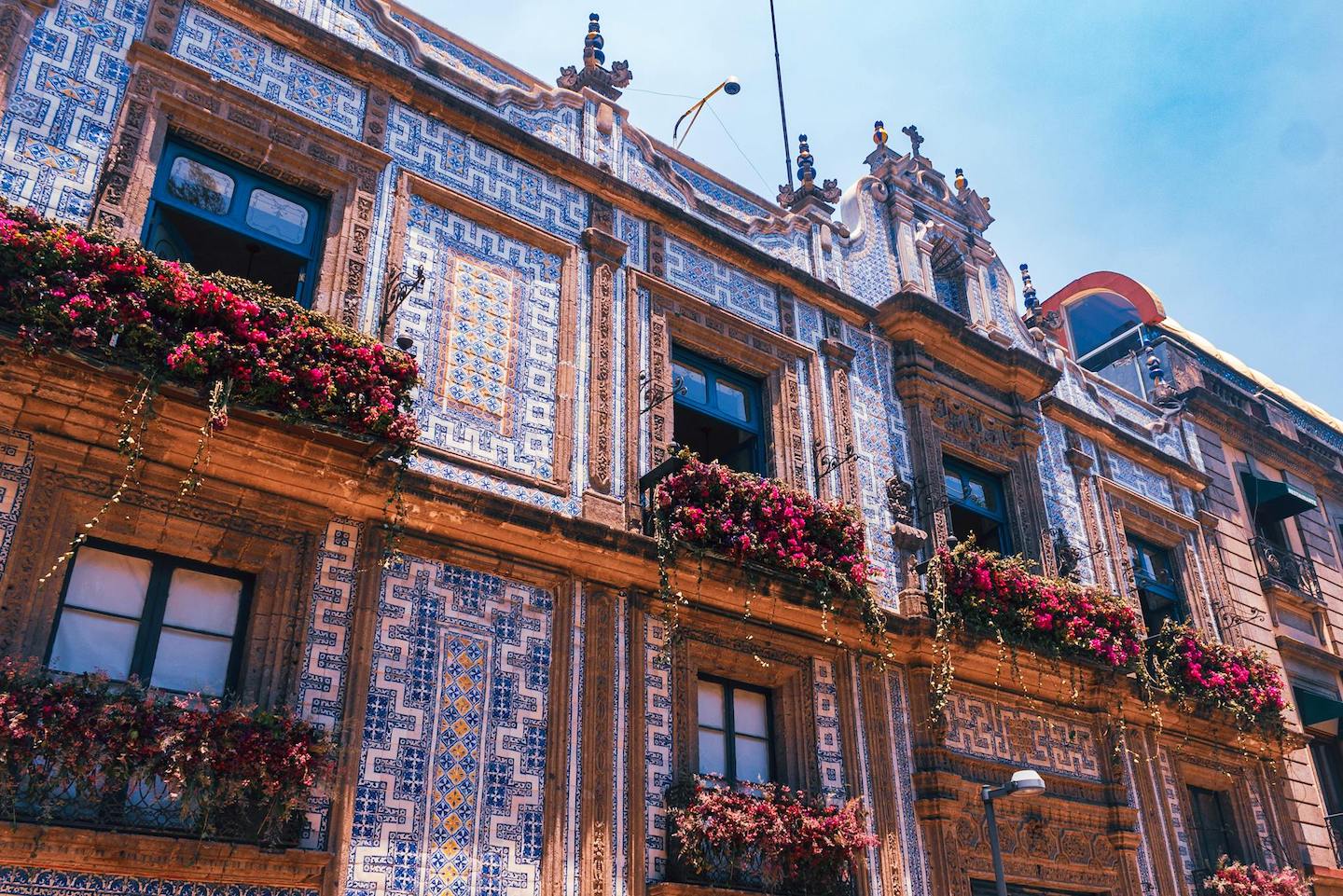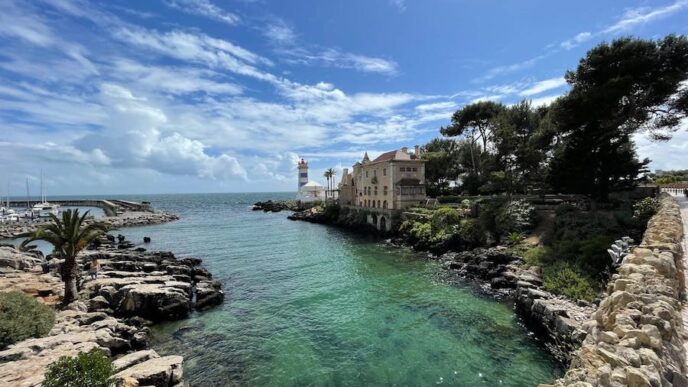These painted, tin-glazed ceramic tiles are more than just a simple form of decoration; they are a living testament to the cultural history of Portugal. From the walls of churches to the facades of private homes, from train stations to public squares, Azulejos are a distinctive feature of Portuguese architecture and design. Let’s dive deep into the history, creation and ubiquitous use of these magnificent tiles.
Unearthing the Colorful History of Portugal’s Azulejo Tiles
Azulejo tiles have a rich history that dates back to the 13th century during the Moorish occupation of the Iberian Peninsula. The art form was refined in Seville, in the kingdom of Al-Andalus, where Spanish and Muslim artisans used local clay to create the tiles. The word “Azulejo” originates from the Arabic word “az-zulayj”, which means “polished stone”. The tiles were introduced to Portugal in the 15th century by King Manuel I after a visit to Seville. He was so impressed by the beauty of the tiles that he ordered his own palace to be adorned with them. Since then, Azulejo tiles have become a significant part of Portuguese culture and architecture, symbolizing the country’s artistry, imagination, and technical prowess.
In the 16th and 17th centuries, Azulejo tiles became increasingly popular in Portugal. They were used in a variety of ways, from decorating the walls of churches and monasteries to adding a touch of elegance to private homes. Azulejos were also used to tell stories, with intricate designs portraying historical or biblical events. By the 18th century, the tiles had evolved from simple geometric patterns to more complex scenes and portraits, reflecting the influence of the baroque and rococo artistic styles of the time.

The 20th century saw a resurgence in the popularity of Azulejo tiles, with artists such as Maria Keil reviving the traditional art form and using it to decorate public spaces like metro stations. Today, these tiles remain a quintessential part of Portuguese aesthetics, with modern interpretations continuing to innovate and inspire.
The Artistic Process: Creating Azulejo Tiles from Scratch
Creating Azulejo tiles is a labor-intensive process that requires both artistic skills and technical knowledge. It begins with shaping a piece of clay into a square or rectangle. The clay tile, known as “biscuit”, is then fired in a kiln at high temperatures to make it hard and durable. Once the biscuit has cooled, it is ready to be glazed.
The glazing process involves applying a layer of tin oxide to the biscuit. This tin glaze creates a white, opaque surface that is perfect for painting on. Artists then use cobalt blue, the most common color in Azulejo tiles, along with other colors to create their designs. The painted tile is then glazed again to seal the design, and fired a second time to ensure the colors are vibrant and long-lasting.
The intricacy of the designs and the skill required to paint them by hand means that creating Azulejo tiles is a slow process. However, the end result is a durable, beautiful tile that not only adds color and design to a space but is also easy to clean and maintain, making it a practical choice for many architectural applications.

From Churches to Train Stations: Exploring Azulejo Tiles Around Portugal
One cannot visit Portugal without noticing the breathtaking Azulejo tiles that adorn its buildings. Churches are the most common places to find these tiles, with the Igreja do Carmo in Porto being a prime example. Its exterior is covered with a massive tile mural depicting scenes from the life of the Carmelite Order’s founder, while the interior is a showcase of baroque artistry, all in Azulejos.
Train stations across Portugal are also adorned with Azulejo tiles. The São Bento Railway Station in Porto is particularly noteworthy. Its entrance hall is adorned with over 20,000 Azulejo tiles, depicting scenes from Portugal’s history, its transportation evolution, and its countryside. The tiles were painted by Jorge Colaço, one of Portugal’s most famous tile painters, and the station is considered one of the most beautiful in the world.
Private homes, shops, and public squares in Portugal also proudly display Azulejo tiles, creating a vibrant, colorful streetscape that is uniquely Portuguese. These tiles are so important to the country’s identity that they are protected by law, and cannot be removed or altered without permission.
Each tile tells a story, whether it’s of Portugal’s rich history or simply the creativity of the artist. Next time you find yourself strolling through the streets of Lisbon or Porto, take a moment to stop and marvel at the stunning Azulejo tiles that adorn the buildings. They are a reminder of the country’s artistic heritage and a testament to the beauty and practicality of this timeless art form. In the end, Azulejo tiles are more than just a decoration; they are the heart and soul of Portugal.













